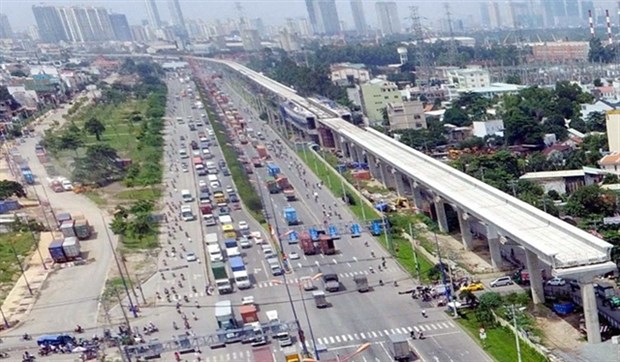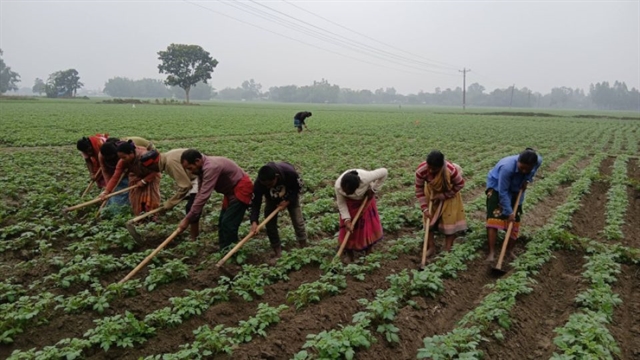 Economy
Economy


|
| An elevated section of HCM City’s Bến Thành – Suối Tiên metro line runs along Hà Nội Highway. The city will prioritise investment in road infrastructure if it receives permission to raise the budget revenue-retention ratio — VNS Photo Mạnh Linh |
HCM CITY — HCM City will prioritise investment in road infrastructure if it receives permission to raise the budget revenue-retention ratio, according to HCM City Party Committee Secretary Nguyễn Thiện Nhân.
Speaking at a recent meeting in the city, Nhân said that "it would take 150 years to have enough roads for the city’s traffic activities" unless the city speeds up progress of road projects and invests more in transport and roads.
Traffic is the most pressing problem as there is an increase of one million motorcycles every five years in HCM City, leading to worsening congestion unless the busy roads are expanded and more roads are built.
"The rate of land allocated for transport remains too low," he said, adding that a city’s average road length around the world is at least 10km per sq.km, while HCM City will reach only 2.1km per sq.km by the end of 2020.
"Another problem is a lack of housing," he said. "The average housing area of the city is 20 sq.m per person, while the national average is 24 sq.m.
In addition, the city also faces other problems such as flooding, sea-level rise, and ground subsidence, according to Nhân.
Singapore plans to spend US$100 billion over the next 50 years to build dykes and drainage systems to prevent flooding.
HCM City does not have that much money but it will still need to earmark a certain amount of budget to tackle flooding threatening the lives of millions of people, he noted.
HCM City recently asked for permission to raise the budget revenue retention ratio to 24 per cent in the 2021-2025 period, and 33 per cent in the 2026-2030 period, the ratio granted to the city back in 2003.
The new ratio is considered to be sufficient for the city to ensure its stable development and affirm its role as the nation’s economic locomotive, which then in turn, would enable the city to contribute more to the national budget.
With only 9 per cent of Việt Nam’s total population, HCM City contributes 24 per cent of the country’s GDP and 27 per cent of the national budget, meaning each resident is contributing three times as much as those in other localities, according to Nhân.
However, the city only gets to keep 18 per cent of its annual budget, which hampers infrastructure investment and development, he said.
HCM City currently has the lowest budget retention rate of all cities in the world, and this should change.
For the 2016-2020 period, the city has been allowed to keep just 18 per cent of its annual revenues, with the rest having to submit to the national budget.
HCM City has a population of 13 million people including migrants.
The city is among the 20 per cent of localities in Việt Nam which can cover its own expenditures while contributing to the national coffer.
For many years, the city has been the country’s largest money-maker and assigned the highest state budget collection target.
Last year, HCM City's budget collection topped VNĐ378 trillion ($16.3 billion), up 8.6 per cent compared to 2017.
In 2019, the southern metropolis is expected to make VNĐ412 trillion, or 27 per cent of the national figure.
The latest estimation is 3.3 per cent higher than the target. — VNS




